#Owain Glyn Dwr
Text
Constance, daughter of Edmund of Langley (Constance of York), was well-suited for a life with the Despensers. After Thomas's execution in 1400, she received goods and chattels worth £200, plus land worth a thousand marks annually as maintenance. At some point in the next four years Constance had a daughter, Eleanor, by Edmund Holland, earl of Kent, with whom - in Wylie's words - she was 'living in concubinage'. In February 1405 she became entangled in a Ricardian plot to bring down the Lancastrian regime, masterminded by her brother, (Edward) duke of York. Constance abducted the young Mortimer heirs at Windsor - it was they who had greatest claim to Richard II's throne in 1399 - and set out for Wales, presumably intending to link with the boys' father, an ally of the Welsh freedom-fighter Owain Glyn Dwr. However, the plot failed when they were captured at Cheltenham, and Constance was imprisoned in Kenilworth Castle. She appeared before the king's council accused of treason: the Chronicle of London recorded how ‘they seyden that the eldere chyld was trewe kyng.’ The Despenser lands were declared confiscate, although restored the following year. In essence, the plot was a failure, although it provides a fascinating insight into Constance's life after her husband's death. Perhaps most ironic of all was that a Despenser should have been attempting to place a Mortimer on the throne.
- Martyn John Lawrence, “Power, Ambition and Political Rehabilitation - the Despensers”
#historicwomendaily#history#constance of york#thomas le despenser#english history#15th century#despensers#kinda
13 notes
·
View notes
Text
War for the Throne: The Battle of Shrewsbury 1403 -::- John Barratt
War for the Throne: The Battle of Shrewsbury 1403 -::- John Barratt

War for the Throne: The Battle of Shrewsbury 1403 -::- John Barratt lands on the shelves of my shop.
Barnsley: Pen & Sword Military, 2010, (First Edition) Hardback in dust wrapper.
Contains: Black & white photographs; Chronological tables [1]; Glossary;
From the cover: The opening years of the fifteenth century saw one of the most bitterly contested political and military struggles in the history…
View On WordPress
#978-1-848-84028-7#alnwick castle#battle of shrewsbury#books in the campaign chronicles series#books written by john barratt#britain history#cover art by jon wilkinson#england kings#first edition books#henry iv#homildon hill#owain glyn dwr#pilleth#warkworth castle
0 notes
Photo

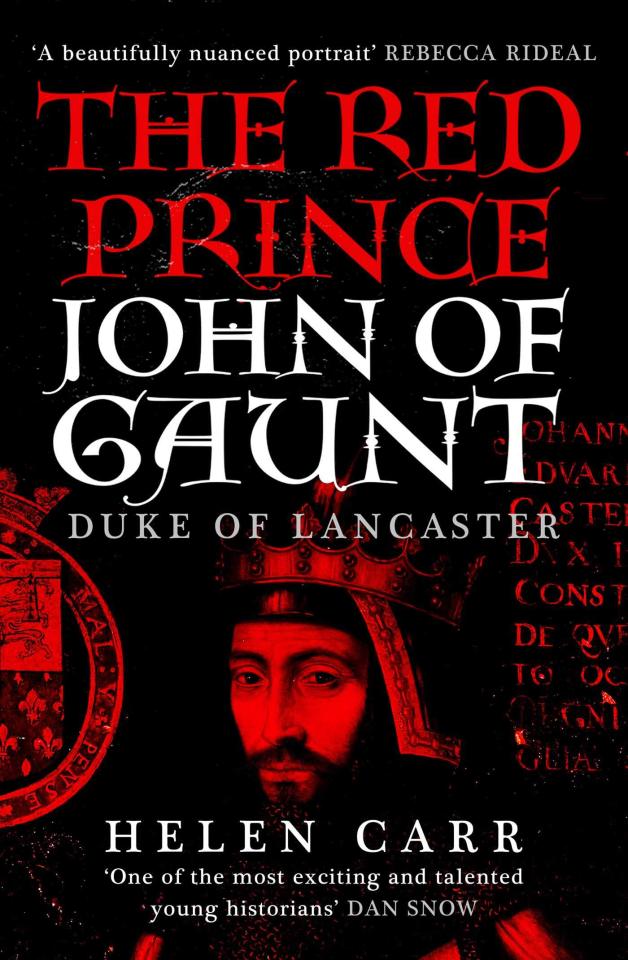
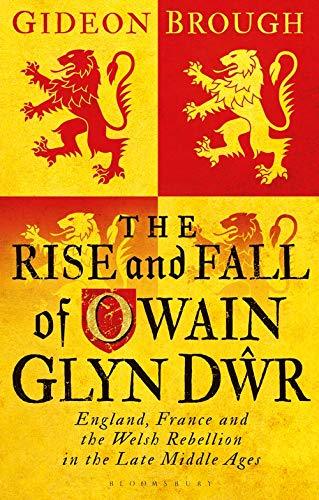

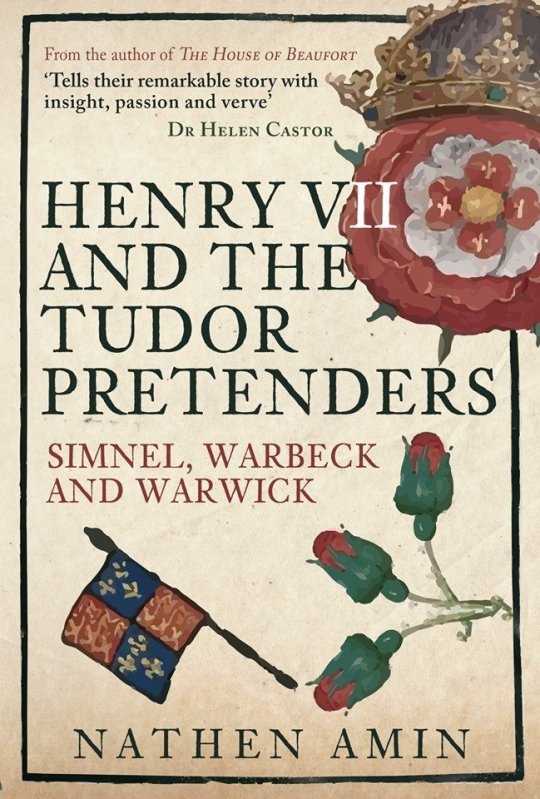
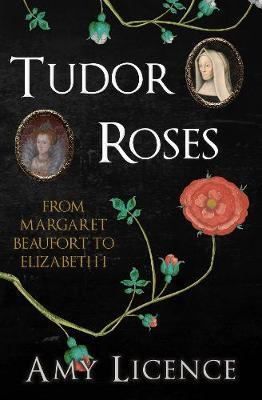
hey girls, haven’t done one of these in awhile but i finally found enough new releases to do a post (i’m guessing all these dates are subject to change, but these are what they are listed as of now)
King and Collector: Henry VIII and the Art of Kingship ( 1 April 2021)
. In contrast to later royal collectors, this king was more interested in storytelling than art for its own sake, and all his commissions relate to one central tale: the glorification of Henry and his realm. His life can be seen through his art collection and the works tell us much about both his kingship and his insecurities
The Red Prince: The Life of John of Gaunt, the Duke of Lancaster (15 April 2021)
Helen Carr will paint a complex portrait of a man who held the levers of power on the English and European stage, passionately upheld chivalric values, pressed for the Bible to be translated into English, patronised the arts … and, if you follow Shakespeare, gave the most beautiful oration on England (‘this sceptred isle… this blessed plot’). An engrossing drama of political machinations, violence, romance and tragedy played out at the cusp of a new era.
The Rise and Fall of Owain Glyn Dwr: England, France and the Welsh Rebellion in the Late Middle Ages (25 February 2021)
Owain erected a rebel state and won international recognition, as the book so insightfully shows. It later reflects on how Owain's foreign support was fractured by the intrigues of exceptionally talented English diplomats at work in the French court and the subsequent creation of an environment which allowed Crown forces to concentrate on defeating the rebellion in Wales. Brough very effectively argues that, although ultimately unsuccessful, Owain emerges from the era as a gifted and honourable leader, giving the Welsh a figure commonly recalled as a hero.
Elizabeth I's Last Favourite: Robert Devereux, 2nd Earl of Essex (26 March 2021)
n Elizabeth I's Last Favourite, Sarah-Beth Watkins brings the story of his life, and death, back into the public eye. In the later years of Elizabeth I's reign, Robert Devereux became the ageing queen's last favourite. The young upstart courtier was the stepson of her most famous love, Robert Dudley, Earl of Leicester. Although he tried, throughout his life, to live up to his stepfather's memory, Essex would never be the man he was. His love for the queen ran in tandem with undercurrents of selfishness and greed. Yet, Elizabeth showered him with affection, gifts and the tolerance only a mother could have for an errant son. In return, for a time, Essex flattered her and pandered to her every whim.
Henry VII and the Tudor Pretenders: Simnel, Warbeck, and Warwick (15 April 2021)
For the first time in one compelling and comprehensive account, Nathen Amin looks at the myriad of shadowy conspiracies and murky plots which sought to depose the Tudor usurper early in his reign, with particular emphasis on the three pretenders whose causes were fervently advanced by Yorkist dissidents ‒ Lambert Simnel, Perkin Warbeck, and Edward, Earl of Warwick. Just how close did the Tudors come to overthrow long before the myth of their greatness had taken hold on our public consciousness?
Tudor Roses: From Margaret Beaufort to Elizabeth I (15 February 2022)
Yet the Tudor dynasty is full of women who are fascinating in their own right, from Margaret Beaufort, who finally emerged triumphant after years of turmoil; Elizabeth of York’s steadying influence; Catherine of Aragon and Anne Boleyn, whose rivalry was played out against the backdrop of the Reformation; to Mary I and Elizabeth, England’s first reigning Queens. Then there were all the others: Henry VIII’s fascinating sisters who became Queens of France and Scotland, and their offspring, the Brandon and Grey women, Lady Margaret Douglas and her granddaughter Arabella Stuart. Many more women still danced the Pavane under Henry’s watchful eye or helped adjusted Elizabeth’s ruff. Without exception, these were strong women, wielding remarkable power, whether that was behind the scenes or on the international stage. Their contribution took England from the medieval era into the modern. It is time for a new narrative of the Tudor women: one that prioritises their experiences and their voices.
57 notes
·
View notes
Text
Caernarfon Castle

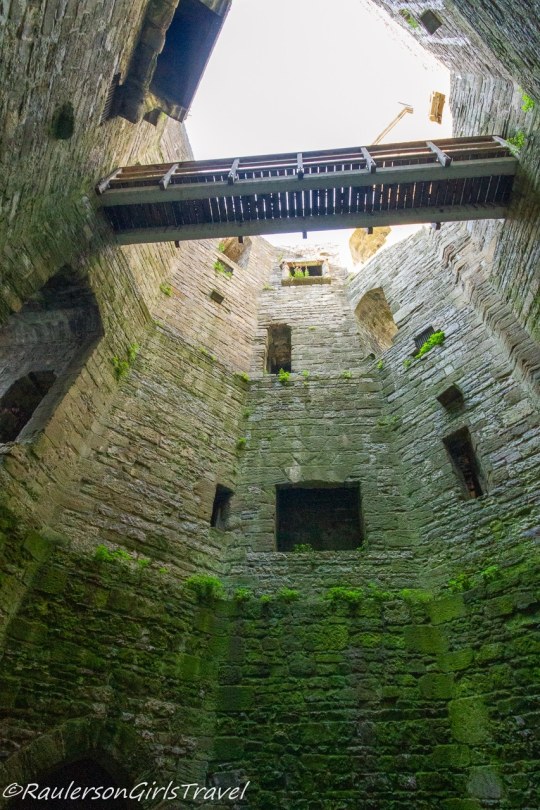
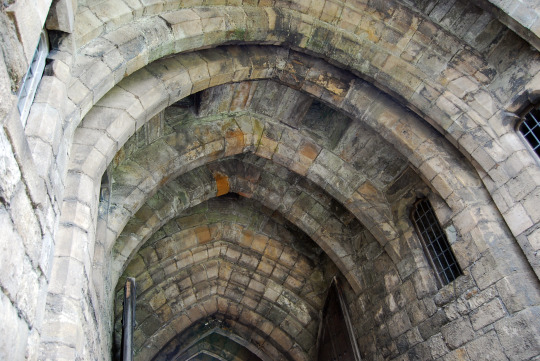
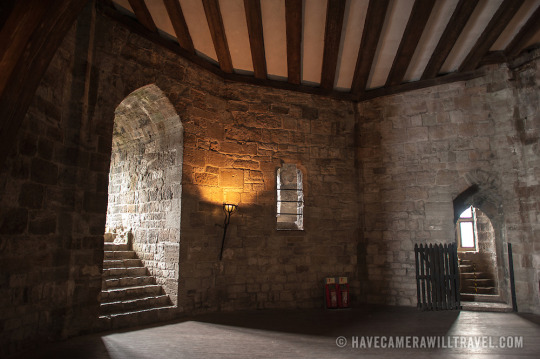
Caernarfon Castle is located in the county of Gwynedd in Caernarfon, Wales. The medieval castle was first built in 1283 by Edward I of England to help control the newly conquered land from Normans attacks and capture Wales. The castle is located upon a 394 AD Roman fort along the Menai Strait at the mouth of the Seiont River. It is the most ambitious of King Edward’s iron ring of castles as it included town walls. The medieval castle has a long history of attacks, so modifications were added to help with defenses throughout the years, including the King’s Gate. In 1294, the castle was attacked and burned by Welsh leader Madog Ap Llywelyn. King Edward I retook the castle and built the King’s Gate, a massive structure with a drawbridge over a pit with several portcullis, gates, guardhouses, and machicolations. By 1330, the castle had undergone the last of its extensions. The castle has two upper and lower inner courtyards and twelve octagonal towers built into the curtain wall that offer accommodations. The Queens Tower was once called the Banner tower. It is the highest tower and the one that displayed the flag. The Cistern Tower collected rainwater into a stone-lined tank, while the Well Tower had a fifty-foot deep well. The Eagle Tower has three turrets with three floors, a spiral staircase, and a basement with access to the river through a portcullis. The Eagle Towers has ten sides with 18 feet thick walls to allow for passages to be carved from them on the upper floors. The castle was besieged twice, once in the 15thcentury by Owain Glyn Dwr, who became the Prince of Wales from 1404-15. By the mid 16th century, a military was no longer needed, and the castle fell to ruin, while some of its wings were used as a county prison. Restoration of the castle began in the 19th century. In 1908, Caernarfon Castle was handed over to the Office of Works, who continued repairs. In the 20th century, the castle was used for a couple of royal ceremonies. Prince Charles received his formal title at Caernarfon Castle. The interior boasts circular stone fireplaces, a shop, and the Royal Welsh Fusiliers Museum, which houses, uniforms, guns, medals, and exhibitions. The castle became a UNESCO World Heritage Site in 1986. Caernarfon Castle is open to the public and remains the property of the Crown.
4 notes
·
View notes
Text
I’m on page 137 of Monmouth Harry, which covers roughly 19 years, ending with Hal’s coronation as King of England.
Thoughts!
so far I like this best of the novels about Henry V I’ve read but that is a supremely low bar to clear
Maughan refers Hal as “Henry” in-text but also has him referred to as “Hal” and “Harry” by other characters. This is not confusing at all (reader, it is very confusing.)
Henry IV is referred to “Derby” throughout .
Hal’s tutor is called Malbon. Me: “his name was Melbourne though”. *five chapters later* “OH I guess Malbon would be a spelling variant of Melbourne?”
Hal does snog Owain Glyn Dwr’s daughter once but there’s no actual Hal/Welsh OFC so far
i am not hopeful this will continue
Mary de Bohun is lovely in this even if she dies in seven pages.
interestingly, it does begin with a mainly positive Hal & Henry relationship that then breaks down over time. Not how I see them but points for originality!
Henry hits Hal in the face with his walking stick D:
Thomas laughs at Hal for that, everyone says Hal deserved it D:
Gaunt is awful but dies within 12 pages.
Richard is dead within 36 pages.
Arundel is sickeningly awful (I wrote him urging Henry to have Hal flogged once and felt that was overdoing it, he does the equivalent multiple times).
Joan Fitzalan is lovely.
Richard II is barely in this and barely bonds with Hal but his ghost lingers over Hal so that’s neat. We also don’t know if Henry did murder him so :\
...I would probably say that Richard is written as queer-coded but I can’t say that he’s a villain or a hero since he’s barely in it. But hey, at least he doesn’t get “will he molest Hal or not?” treatment.
my expectations for Henry V novels are so low a crab couldn’t limbo under them (can a crab limbo?)
Maughan is big on Hal’s wild youth which is largely contested today but she also goes hard on Hal being an emotional wreck which I love. Boy fasts for two days before his coronation and only eats the evening after.
I mean, I don’t find that very likely cuz it’d be weird for the king not to eat at his own coronation feast but:
I LOVE HAL BEING A WRECK. whump that boy hard.
...man imagine if Maughan had known how bad his arrow wound actually was.
not much on the brotherly feels front
this was published in 1957 so I’m kinda like floating on a “this is wrong, was this known at the time? WHO KNOWS.” cloud.
Richard Courtenay has not appeared but he is mentioned once and his name is given as Roger. I am not hopeful.
nice Chichele-Hal bonding though.
though I am sad that Maughan switched out Hal spending the night of his father’s death with an anchorite before chatting to Chichele though.
Apparently the northern English accent is because everyone decided to copy Hotspur’s speech impedient out of admiration for him?
Hotspur is weird in this. It’s quasi-heroic but also like damn that man’s a bastard.
he did give Hal a dog tho.
Joanna of Navarre does not come off well. she complains that Hal is unruly because Mary de Bohun was too tolerant (the very first chapter explicitly characterises Henry as being the overly indulgent parent and Mary’s dead within two months of that) and Henry comes to say the same thing.
Hal is very against a marriage to Anne of Burgundy and Joanna keeps pushing it even after Henry promised Hal it won’t happen so much so Henry starts discussing it again.
there’s no reference to Oldcastle thus far and very few to the war with France
so basically: it’s better than the other Henry V novels (what, like it’s hard?) and there’s some nice things but I feel it santises Hal too much already and I’m not that hopeful for the future.
7 notes
·
View notes
Photo
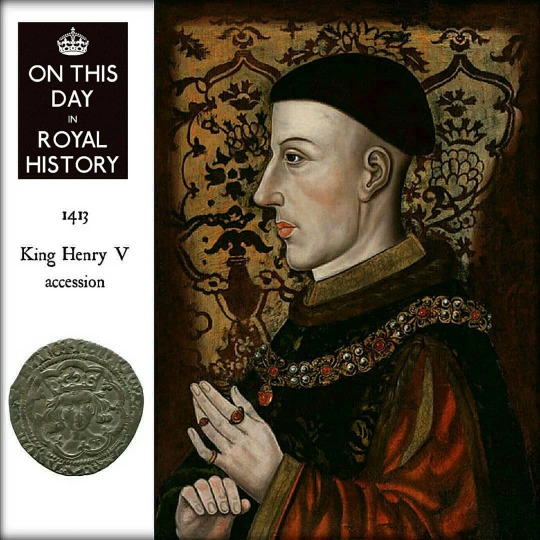
On This Day In History
.
20 March 1413
.
King Henry V accession.
.
◼ After his father, Henry IV died on 20 March 1413, Henry V succeeded him & was crowned on 9 April 1413 at Westminster Abbey. The ceremony was marked by a terrible snowstorm, but the common people were undecided as to whether it was a good or bad omen.
.
◼ Henry was described as having been “very tall (6ft 3 in), slim, with dark hair cropped in a ring above the ears, & clean-shaven”. His complexion was ruddy, the face lean with a prominent & pointed nose. Depending on his mood, his eyes “flashed from the mildness of a dove’s to the brilliance of a lion’s”.
.
.
👑 HENRY V (b.16 September 1386/1387, Monmouth Castle – d.31 August 1422, France) was King of England from 1413 until his death at the age of either 34 or 35 in 1422. He was the second English monarch who came from the House of Lancaster.
.
◼ After military experience fighting the Welsh during the revolt of Owain Glyn Dwr, & against the powerful aristocratic Percys of Northumberland at the Battle of Shrewsbury, Henry came into political conflict with his father, whose health was increasingly precarious from 1405 onward.
.
◼ After his father’s death in 1413, Henry assumed control of the country & embarked on war with France in the ongoing Hundred Years’ War (1337–1453) between the two nations. His military successes culminated in his famous victory at the Battle of Agincourt (1415) & saw him come close to conquering France.
.
◼ After months of negotiation with Charles VI of France, the Treaty of Troyes (1420) recognized Henry V as regent & heir-apparent to the French throne, & he was subsequently married to Charles’s daughter, Catherine of Valois (1401–37).
.
◼ Following Henry V’s sudden & unexpected death in France two years later, he was succeeded by his infant son, who reigned as Henry VI (1422–61, 1470–71)
.
.
.
#Onthisdayinhistory #Thisdayinhistory #TheYear1413 #Accession #KingofEngland #HenryV #KingHenryV #HouseofLancaster #BattleofAgincourt #EnglishMonarchy #BritishMonarchy #d20mar #kinghenryvofengland #Plantagenet #Plantagenets #Medieval #medievaltimes #RoyalHistory #Onthisday #otd #Englishhistory #royalfamily #history (at England)
https://www.instagram.com/p/B9-SjiKA_9U/?igshid=fep2bds1nit2
#onthisdayinhistory#thisdayinhistory#theyear1413#accession#kingofengland#henryv#kinghenryv#houseoflancaster#battleofagincourt#englishmonarchy#britishmonarchy#d20mar#kinghenryvofengland#plantagenet#plantagenets#medieval#medievaltimes#royalhistory#onthisday#otd#englishhistory#royalfamily#history
1 note
·
View note
Text
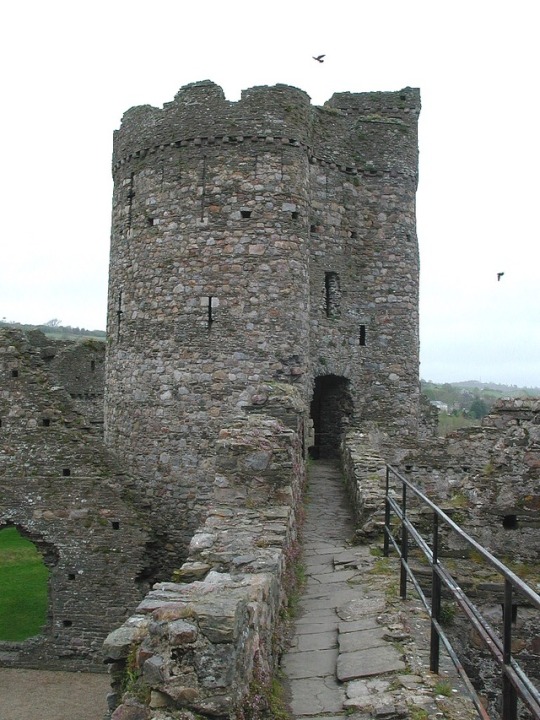

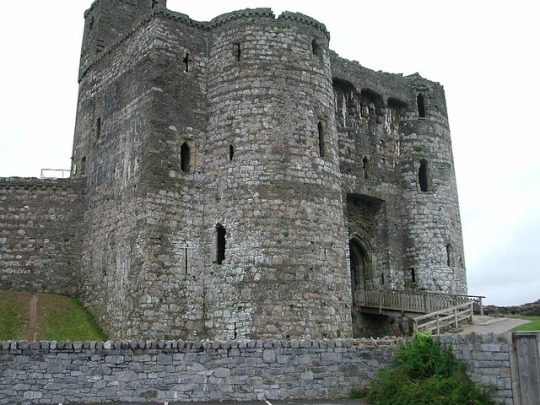
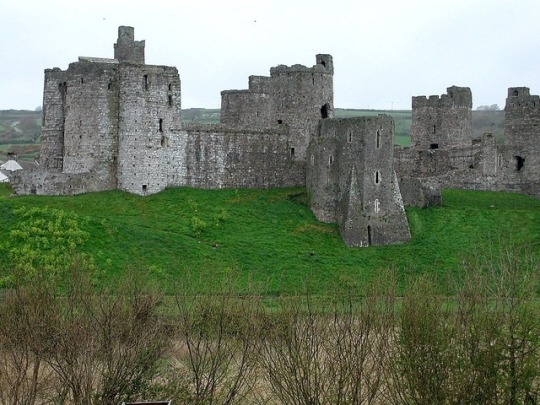

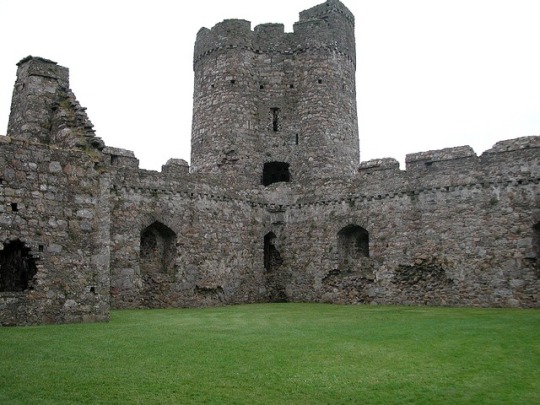
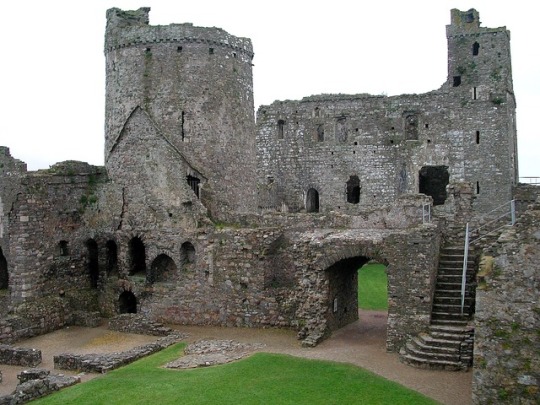


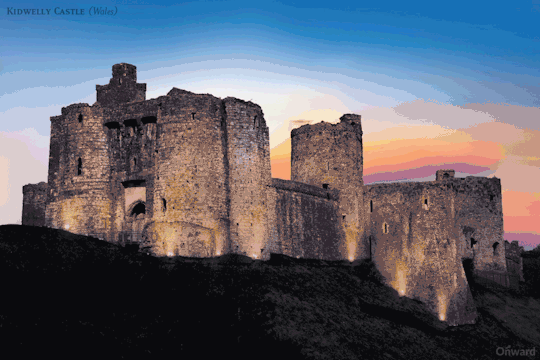
Kidwelly Castle (Dyfed, Wales).
Kidwelly was initially built as a wooden structure as the Normans entered southwest Wales, around 1106. Major stone fortification was added in the final decade of the 1300s, just in time to withstand a five-month siege at the outbreak of the Owain Glyn Dwr rebellion.
The following years of peace diverted the focus to residential building and the grandeur of Kidwelly’s military fortress was allowed to fade. This means that although it’s considered a ruin, Kidwelly is actually one of the best preserved and most awe-inspiring castles in Wales today.
Photo Jeffrey L. Thomas.
Gif Stride Financial.
18 notes
·
View notes
Text
I am not so selfish as to keep all these great recommendations to myself! Thanks, all!
@tollers-and-jack replied to this post:
Finding Camlann! Archaeologist and OED linguist hunt for the truth about Owain Glyn Dwr and Arthur. Welsh separatism, too.
Yes!! This (by Sean Pidgeon, for those wondering) was my favorite public library find last year, and is Exactly The Kind Of Thing I am looking for. You know me so well. I loved the scene where they were digging up 18th-century buttons, and also that such a scene exists in a novel about King Arthur being real and pompous telly dons being discomfited.
@treets:
Deanna Raybourne's Veronica Speedwell series is fun and, somewhat rarely for a series, keeps getting better as it goes along.
Lepidoptery! Adventure! Plant-based puns! I’m sold! Plus, it looks as though Veronica might be not unlike Sherlock Holmes.
@amindamazed
I imagine you may have already read this, but AS Byatt's Possession would fit.
Oh gosh have I ever. Maybe I need to reread it.
@oulfis
It might be an obvious one, but The Beekeeper's Apprentice by Laurie King came to mind?
Thank you, yes, it is on my shelves. :)
@thelibraryiscool
This is...QUITE different in style to smth like Dorothy Sayers, but Mr Penumbra’s 24-hour Bookstore is chock-full of a love of literature and does certainly feature women succeeding in academic (or technological) pursuits.
Ooh! I think this is on my TBR but I haven’t read it; I’ll look it out!
@queso-is-love
So they’re pretty light and focus a bit more on mystery, but Elizabeth Peters’ Vicky Bliss series is about a Medieval Art Historian who solves crimes - all the crimes are related to art history. There’s also an ongoing romance with an art and antiquities forger. They’re delightful and easy reads.
Charming! I enjoy the Amelia Peabody series, but I somehow didn’t know about Elizabeth Peters’ medieval art history series.
@editrix1031
Genevieve Cogman’s Invisible Library series is fun and smart and steampunk in a good way.
What a tantalizing one-line teaser! More to explore...

24 notes
·
View notes
Text
tagged by @apassingfandomenthusiast
Last Movie I Watched: The Emperor’s Naked Army Marches On
Last Song I Listened to: I forgot the name of it, but it was on a Eurobeat CD of mine.
Last Book I Read: The Revolt of Owain Glyn Dwr by R.R. Davies
If I Could be Anywhere in the World Right now: Slab City
Where Would I Want to Time travel to: probably ancient Rome
Fictional Characters I Would Hang Out With: Yang Wenli, Ryosuke Takahashi, and Fox Mulder
1 note
·
View note
Text
6 lâu đài cổ của nước Anh tuyệt đẹp như thế nào trong quá khứ?
Thời gian không chỉ che mờ đi những sự kiện lịch sử, chúng còn hủy hoại cả những tác phẩm nghệ thuật và công trình kiến trúc gắn liền với sự kiện lịch sử đó. Khi dạo quanh những tòa lâu đài đổ nát ở nước Anh, người ta không khỏi tiếc nuối cho một thời kỳ huy hoàng đã qua. Tất cả chỉ còn là những đống đổ nát, những bức tường bị bong lở và những bụi cây mọc rải rác khắp nơi.
Với mong muốn giúp công chúng có thể tưởng tượng lại phần nào khung cảnh huy hoàng trong quá khứ, các kiến trúc sư đã sử dụng công nghệ máy tính để làm sống lại những công trình đồ sộ này. Hãy cùng chúng tôi khám phá chúng thông qua những bức ảnh dưới đây.
1. Lâu đài Dunluce (Quận Antrim, Bắc Ireland)
[caption id="attachment_1032462" align="alignnone" width="600"] (Ảnh: Onstride.co.uk)[/caption] [caption id="attachment_1032463" align="alignnone" width="600"] (Ảnh: Onstride.co.uk)[/caption]
Lâu đài Dunluce có một lịch sử ấn tượng hơn bất kỳ tòa lâu đài nào ở nước Anh. Lâu đài được xây dựng từ năm 1500, là một trong những di tích mang tính biểu tượng nhất ở Bắc Ireland nằm trên bờ biển Antrim hiểm trở. Một phần của tòa lâu đài đã bị sạt lở khi chủ nhân của chúng đang dùng bữa tối, chính điều này khiên nơi đây bị bỏ hoang kể từ năm 1639.
2. Lâu đài Dunstanburgh (Northumberland, Anh)
[caption id="attachment_1032464" align="alignnone" width="600"] (Ảnh: Onstride.co.uk)[/caption] [caption id="attachment_1032465" align="alignnone" width="600"] (Ảnh: Onstride.co.uk)[/caption]
Lâu đài Dunstanburgh được xây dựng vào thế kỷ 14 trên bờ biển Northumberland ở phía bắc nước Anh, nằm giữa hai ngôi làng Craster và Embleton. Lâu đâì được xây dựng bởi Earl Thomas vào giữa những năm 1313 và 1322. Tận dụng lợi thế phòng thủ tự nhiên và công nghệ xây dựng của thời đại đồ sát, người ta đã biết nơi đây thành một pháo đài phòng thủ cực kỳ hiệu quả.
Lâu đài rơi vào hư hỏng sau khi trải qua cuộc chiến tranh Hoa hồng. Sự đổ nát và hoang tàn đem đến cho chúng ta một nỗi buồn man mác khi nhớ về lịch sử vang son mà nó đã từng có.
3. Lâu đài Bothwell (South Lanarkshire, Scotland)
[caption id="attachment_1032469" align="alignnone" width="880"] (Ảnh: Onstride.co.uk)[/caption]
Lâu đài có từ thế kỷ 13 này đã chứng kiến rất nhiều sự kiện lịch sử trong cuộc Chiến tranh dành Độc lập của Scotland. Quân Anh và quân Scotland liên tục tranh giành nhau quyền sở hữu tòa lâu đài trong thời gian diễn ra cuộc chiến.
Về mặt kiến trúc, Bothwell sở hữu những tòa tháp hình trụ cực kỳ thích hợp cho việc trú ẩn, và ngày nay nó chỉ còn là một tàn tích đã bị hủy hoại trong một loạt các cuộc vây hãm. Ngoài ra nơi đây còn được đồn đoán là nơi cư ngụ của một bóng ma Quý tộc thời trung cổ.
4. Lâu đài Goodrich (Herefordshire, Anh)
[caption id="attachment_1032470" align="alignnone" width="600"] (Ảnh: Onstride.co.uk)[/caption] [caption id="attachment_1032473" align="alignnone" width="600"] (Ảnh: Onstride.co.uk)[/caption]
Lâu đài được bắt đầu xây dựng vào năm 1102 và được sửa chữa sau đó bởi Godric Mappestone. Trải qua hơn 500 năm, mãi cho đến cuộc nội chiến năm 1642, thành trì này mới bị hủy hại nghiêm trọng đến mức không thể phục hồi.
Quân đội của Cromwell đã công phá những bức tường đá bằng các quả đạn nặng xấp xỉ 90 Kg. Kể từ đó, nó bị bỏ hoang. Và ngày nay, thật may mắn khi các du khách vẫn còn có thể tham gia những buổi triển lãm ngoạn mục về một thời kỳ lịch sử đã qua của tòa lâu đài này.
5. Lâu đài Caerlaverock (Dumfries và Galloway, Scotland)
[caption id="attachment_1032475" align="alignnone" width="600"] (Ảnh: Onstride.co.uk)[/caption]
Đây là lâu đài duy nhất có kiến trúc hình tam giác ở Vương Quốc Anh. Nó được xây dựng vào năm 1280 và bị tháo dỡ một phần trong thế kỷ 14 theo lời của Sir Robert Bruce để ngăn chặn bị rời vào tay kẻ thù.
Sau khi đươc khôi phục nó lại bị phá hủy khi bị bao vây bởi quân đội của bá tước Sussex vào năm 1570, và rồi được khôi phục một lần nữa. Nó chỉ hoàn toàn bị đánh bại khi trải qua cuộc chiến cuối cùng trong 13 tuần bị bao vây trong Chiến tranh giám mục. Và tình trạng của nó được lưu giữ như vậy cho đến ngày nay.
6. Lâu đài Kidwelly (Dyfed, xứ Wales)
[caption id="attachment_1032478" align="alignnone" width="600"] (Ảnh: Onstride.co.uk)[/caption] [caption id="attachment_1032477" align="alignnone" width="600"] (Ảnh: Onstride.co.uk)[/caption]
Kidwelly ban đầu được xây dựng bằng gỗ khi người Norman bước vào tây nam xứ Wales, khoảng năm 1106. Việc gia cố đá lớn đã được thực trong thập niên cuối cùng của thế kỷ 13, vừa kịp để chịu đựng một cuộc bao vây kéo dài năm tháng trong sự bùng nổ của cuộc nổi loạn Owain Glyn Dwr .
Những năm sau hòa bình, sự kiêu hùng của lâu đài cũng bị phai nhạt dần khi người ta không còn phải quan tâm đến việc sử dụng nó cho các cuộc chiến. Điều này không có nghĩa rằng nó là một đống đổ nát, Kidwelly thực sự là một trong những lâu đài được bảo tồn tốt và chứa đựng nhiều cảm hứng nhất ở xứ Wales ngày nay.
Theo Boredpanda.com
Trọng Đạt
from Đại Kỷ Nguyên - Feed - https://ift.tt/2Q77d3f
via https://ift.tt/2Q77d3f https://www.dkn.tv
0 notes
Text
Forbury Prison, Leominster
Historic Environment Record reference no. 19552, Ordnance Survey grid reference SO 4972 5914
It is recorded that since "very early times" there had been a place in Leominster for the detainment of local offenders and captives. The building was apparently of two floors with a gaoler's lodge close by, and is said to have been within the West Gate of the Priory in Church Street. As the local Law Courts held their sittings in the Frere Chamber above the gateway, this arrangement would have been very convenient.

It is here that Owain Glyn Dwr is said to have held Edward Mortimer of Wigmore in 1402. After the decisive Battle of Mortimer's Cross during the Wars of the Roses in 1461, Edward IV used the prison to house Owen Tudor (great-grandfather of Henry VIII), David Floyde, Morgan ap Reuther and other men of note after he had defeated them. It was from here that they were taken, without trial, to the Iron Cross (HER reference no. 12129) and there executed.
In later years the prison was used to detain Catholic recusants, including the famous priest and martyr Father Roger Cadwallader. Quakers, Independents and other Non-Conformist religious members were also imprisoned here.
A Deed of Richard, Abbot of Reading, dated Thursday after the Feast of SS. Simon and Jude, anno XVII Richard II (1394), announcing the appointment of John Lunteley of Lucton to the life office of Gaoler of the prison, gives the following information on his salary and allowances:
"He shall receive in the hall of the Manor of Leominster his Victuals in Meat and Drink as the serving men do every day there. And moreover the said John shall receive every year during his life one Robe of the sort of the serving men and 4s for his salary, with all small profits belonging and due to the said Office."
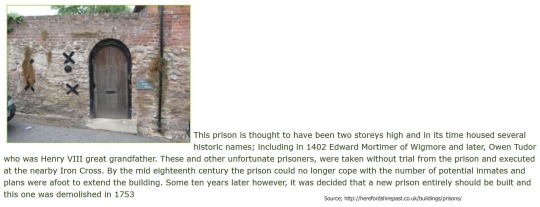
By 1742 the Forbury Prison was too small for the number of prisoners needing to be housed and the Corporation appointed a Committee to prepare a plan for enlargements, with work to be completed by the following spring. In July 1752 the West Gate of the town, along with the Frere Chamber, collapsed but the gaol appears to have escaped any damage. The minutes of the Corporation Proceedings show that the gaol was still in use the following year:
"Tuesday, March 20, 1753
"Ord., That James Clark, Esq., have leave to pull down a part of the Stone Wall near to the dungeon in the Church Street, and to place the stone in the School Yard, and to take away the Rubbish that shall be occasioned therby, and not prejudice any part of the Gaol or said Dungeon."
The following month the Corporation condemned the Forbury Prison to demolition and a new prison was built in nearby New Street.
In 1897 Gainsford T. Blacklock in his book The Suppressed Benedictine Minster & Other Ancient & Modern Institutions of the Borough of Leominster(Leominster Folk Museum, 2nd Edition, 1999) wrote "As the overlord of the 'Peculiar' of Leominster, the Abbot of Reading maintained a Prison, as an adjunct of the local Court of Justice. On the south side of the roadway, just within the Gate, were the Gaoler's Lodge and the Abbot's Prison. The old Prison is now used as a Warehouse. The iron ring and staples to which the prisoners were fastened were until recently still to be seen in the lower part of the walls of the interior. Only a few courses of the masonry of the original front wall of the Prison remain, but the Doorway can be clearly made out.
"It was in this prison that Edmund Mortimer, the Earl of March, of Wigmore Castle, was confined by Owen Glendower in 1402. Mortimer, who was the grandson of Philippa, the daughter of Lionel Duke of Clarence, having a better claim to the throne, owing to his being a more direct heir than Henry IV, that monarch secretly rejoiced at his discomfiture, and refused the urgent requests of the Percies [sic] to ransom him, or to embark on any military enterprise for his release."
(Taken from Alec Haines, Leominster's 20th Century Characters and its Poacher, 1988, p. 56)
With thanks to Eric Turton of Leominster Folk Museum for information on this topic.
[Original author: Miranda Greene, 2003]
0 notes
Photo
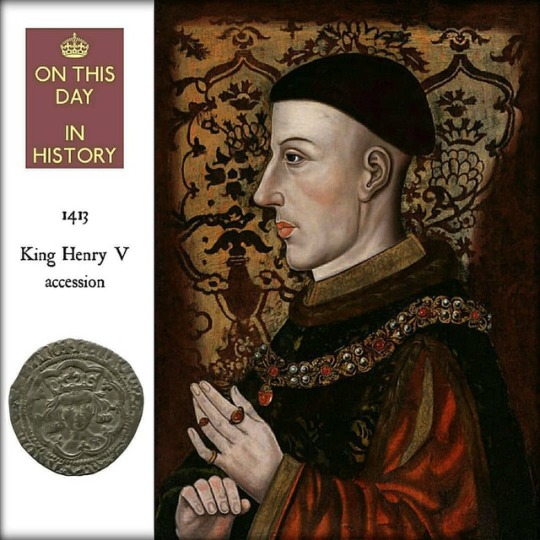
On This Day In History . 20 March 1413 . King Henry V accession. . ◼ After his father, Henry IV died on 20 March 1413, Henry V succeeded him & was crowned on 9 April 1413 at Westminster Abbey. The ceremony was marked by a terrible snowstorm, but the people were undecided as to whether it was a good or bad omen. . ◼ Henry was described as having been "very tall (6ft 3 in), slim, with dark hair cropped in a ring above the ears, & clean-shaven". His complexion was ruddy, the face lean with a prominent & pointed nose. Depending on his mood, his eyes "flashed from the mildness of a dove's to the brilliance of a lion's". . . 👑 HENRY V (b.16 September 1386/1387 – d.31 August 1422) was King of England from 1413 until his death at the age of either 34 or 35 in 1422. He was the second English monarch who came from the House of Lancaster. . ◼ After military experience fighting the Welsh during the revolt of Owain Glyn Dwr, & against the powerful aristocratic Percys of Northumberland at the Battle of Shrewsbury, Henry came into political conflict with his father, whose health was increasingly precarious from 1405 onward. . ◼ After his father's death in 1413, Henry assumed control of the country & embarked on war with France in the ongoing Hundred Years' War (1337–1453) between the two nations. His military successes culminated in his famous victory at the Battle of Agincourt (1415) & saw him come close to conquering France. . ◼ After months of negotiation with Charles VI of France, the Treaty of Troyes (1420) recognized Henry V as regent & heir-apparent to the French throne, & he was subsequently married to Charles's daughter, Catherine of Valois (1401–37). . ◼ Following Henry V's sudden & unexpected death in France two years later, he was succeeded by his infant son, who reigned as Henry VI (1422–61, 1470–71) . . . #Onthisdayinhistory #Thisdayinhistory #TheYear1413 #Accession #KingofEngland #HenryV #KingHenryV #HouseofLancaster #Lancastrian #historyfacts #EnglishKing #Warrior #BattleofAgincourt #historyinpictures #historylovers #historygeek #historybuff #militaryhistory #MonmouthCastle #Monmouth #EnglishMonarchy #BritishMonarchy #d20mar #kinghenryvofengland (at Monmouth Castle) https://www.instagram.com/p/BvPO_dClv_3/?utm_source=ig_tumblr_share&igshid=36x25r9jolpb
#onthisdayinhistory#thisdayinhistory#theyear1413#accession#kingofengland#henryv#kinghenryv#houseoflancaster#lancastrian#historyfacts#englishking#warrior#battleofagincourt#historyinpictures#historylovers#historygeek#historybuff#militaryhistory#monmouthcastle#monmouth#englishmonarchy#britishmonarchy#d20mar#kinghenryvofengland
0 notes